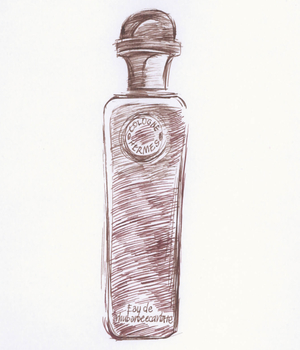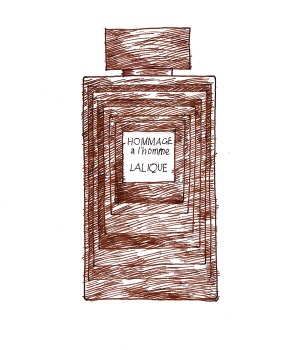Tagged With ‘saffron’
Hermès
Eau de Néroli Doré and Eau de Rhubarbe Eclarate
11 November, 2016
 In spring 2016, after ten years as Hermès’ in-house ‘nose’, Jean-Claude Ellena handed over the (no doubt luxuriously designed) reins to the Swiss-Italian perfumer Christine Nagel. Hermès celebrated the handover with two new additions to its Colognes range, one by Ellena and the other by Nagel – her first perfume for the brand.
In spring 2016, after ten years as Hermès’ in-house ‘nose’, Jean-Claude Ellena handed over the (no doubt luxuriously designed) reins to the Swiss-Italian perfumer Christine Nagel. Hermès celebrated the handover with two new additions to its Colognes range, one by Ellena and the other by Nagel – her first perfume for the brand.
Ellena’s Eau de Néroli Doré is a fittingly sumptuous sign-off from this much-lauded perfumer, using high concentrations of neroli oil, extracted from the flowers of the Seville orange tree. It’s as refined and elegant as the man himself, and like most of his fragrances it also contains an ingredient more often associated with food. In this case it’s saffron, which (to my nose at least) seems to give the perfume an added touch of smoothness and sheen.
Christine Nagel’s Eau de Rhubarbe Eclarate, by contrast, is an exercise in sheer vivacity and ebullience, using the smell of freshly-cut rhubarb and extending its longevity with the soft, refined scent of modern synthetic musks. It’s fruity and sweet and instantly appealing, more emotional than intellectual, but certainly great fun. With its ruby-red bottle it’s a real pick-me-up at the start of the day; save the golden Eau de Neroli Doré for later.
Lalique
Hommage à l’homme
29 April, 2014
 Now here’s a tough one. Hommage à l’homme was the first perfume I reviewed whose London launch I attended and whose creator I met, but it’s also the first perfume I reviewed that I didn’t actually enjoy.
Now here’s a tough one. Hommage à l’homme was the first perfume I reviewed whose London launch I attended and whose creator I met, but it’s also the first perfume I reviewed that I didn’t actually enjoy.
On the whole I dislike knocking things, and generally I’d rather not mention fragrances that do nothing for me, but given the number of new launches each year there are bound to be some duds, so if I’m going to recommend scents that appeal to me it seems only honest to come clean about the ones that don’t.
Lalique has a long association with perfume, going back to 1908, when the ground-breaking French perfumer François Coty commissioned René Lalique to design perfume labels for him. Soon Lalique was designing perfume bottles too, and over the decades the company became known for its innovative techniques and the superb quality of its workmanship.
It wasn’t until 1992, though, that Lalique launched a perfume of its own, the imaginatively named Lalique de Lalique. There are now 19 Lalique perfumes to choose from, and Hommage de l’homme is the fourth to be marketed for men.
Hommage de l’homme marks two decades of perfume production, so you’d hope it’d be something special. My problem is that – to me at least – it smells totally generic, and not in a good way. Yes, I can vaguely smell the violets and saffron that we’re told it contains, but they’re completely overpowered by the same toxic chemical smell that spoils so many otherwise promising men’s fragrances.
Ever since I first recoiled from my first sniff of Dior’s Higher in 2001, every other mainstream men’s fragrance seems to have been stuffed full of the same noxious ingredient, which gets right up my nose. It has a harsh, acrid odour, like you get when your computer blows up – a burnt-plastic smell that I wouldn’t want in a toilet cleaner, never mind a perfume I might spray on my skin.
I’ve been puzzling what this secret component could be, if only so I could avoid it – could it be some kind of natural or synthetic extract of black pepper? Would someone like to tell me? Whatever it is, for me it’s a trend that, like Ugg boots, has long outlasted its welcome. Please, perfumers, move on.
PS: Finally someone has identified it: the much-appreciated Grooming Guru, Lee Kynaston – now we know!